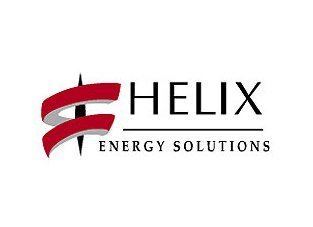Founded 1980 | Number of employees 1,600 | |
 | ||
Traded as NYSE: HLXS&P 600 Company Products Well Intervention OperationsRemotely Operated Vehicle OperationsOil Exploration and ProductionOffshore Production Facilities Revenue $1.39 Billion USD (2011) Stock price HLX (NYSE) US$ 7.39 -0.19 (-2.51%)8 Mar, 4:02 PM GMT-5 - Disclaimer Subsidiaries Well Ops, Inc, Cal Dive International, Inc. Profiles | ||
Helix Energy Solutions Inc., known as Cal Dive International prior to 2006, is an American oil and gas services company headquartered in Houston, Texas. It is a global provider of offshore services in well intervention and ROV operations of new and existing oil and gas fields.
Contents
Timeline
1980 – Oceaneering executives, Lad Handleman, John Swinden, Don Sites and Rick Foreman left the company and named their new company Cal Dive International. Oceaneering was formed in 1964 when Handelman merged his California oilfield diving company, Cal Dive, with Canadian-based Can-Dive and upon his departure Handleman reclaimed his original company name for the new venture.
1983 – Cal Dive Intl. was acquired by Diversified Energy International (DEI) whose financial backing allowed the company to expand with two converted diving vessels.
1985 –Handleman suffered a severe injury in a skiing accident and as a result was paralyzed from the waist down. Jim Nelson would take over the company and Handleman served as a consultant with the company for five more years.
1990 – Led by new CEO Jerry Reuhl, a management team that included future-CEO Owen Kratz, purchased Cal Dive Intl. from DEI for $11 million with Merrill Lynch acting as the financial partner, providing all of the holding a 45% equity position.
1992 – After establishing a business model of acquiring offshore oil and gas properties near the end of their production life in the Gulf of Mexico, Cal Dive Intl. created a subsidiary called Energy Resource Technology (ERT) to manage its growing portfolio of Gulf shelf properties.
1993 Cal Dive Intl. management bought Merrill Lynch out in 1993, and then sold 50% of the company to First Reserve Corporation in 1995, to raise more capital to support a growing deepwater program.
1994 – Cal Dive Intl. acquires its first Dynamically Positioned vessel, the Witch Queen which allowed the company to enter the deepwater market in the Gulf of Mexico for the first time.
1996 – Cal Dive Intl. acquires the Uncle John semi-submersible drilling rig and extends the company’s well intervention capabilities. Cal Dive Intl. also purchased offshore energy company Aquaitica Inc. which was the company’s first corporate acquisition and added four shallow water diving support vessels to its fleet.
1997 –Kratz succeeds Reuhl as CEO. Kratz had previously served as the COO and Executive Vice President. Kratz was an accomplished oilfield diver who had previously owned his own marine construction company. Shortly after his ascension, Cal Dive Intl. became a publicly traded company on the NASDAQ stock exchange.
2001 – Cal Dive Intl. purchases Professional Divers of New Orleans for $11.5 million and acquired 85 percent of outstanding Canyon Offshore shares, and purchased the remaining 15 percent over the next three years. With the acquisition of Canyon Offshore, Cal Dive Intl. could now offer operators ROV, intervention and cable/flowline burial services.
2002 – The world’s first deepsea well intervention semi-submersible, the Q4000, is launched into service in the Gulf of Mexico.
2006 – Following the acquisition of Helix RDS, a reservoir consultancy company, Cal Dive Intl. changed the corporate name to Helix Energy Solutions Group Inc. to better reflect the company’s double-stranded business model of offering contracting services while also maintaining a role as an independent oil and gas producer. The company also moved its stock listing from NASDAQ to the New York Stock Exchange under the new ticker symbol, HLX.
2008 – Newbuild well intervention vessel, Well Enhancer, is launched into service in the North Sea.
2010 – Helix ESG deploys multiple assets and resources to contain the 2010 Gulf of Mexico Oil Spill.
2012 – Helix ESG announces divestiture plans regarding its subsea construction business unit, Helix Subsea Construction, and the sale of its vessels. Helix ESG also announced that going forward well intervention and ROV services would be its primary contracting businesses and new vessels would be purchased or chartered to meet growing demand in those service sectors.
2015 – Helix Energy Solutions Group saw its profit tumble 78 percent in the fourth quarter as upstreams curb drilling activity.
The Company
Helix ESG is divided into four business units:
Helix Well Ops
Provider of a range of well operation, subsea wireline and decommissioning services with specialist vessels and in-house developed equipment that includes the Subsea Intervention Lubricator and the Intervention Riser System. Well Ops’ assets include three purpose-built offshore units along with mobile equipment. As of 2012, at least three more intervention vessels were scheduled to be added to Well Ops fleet starting in 2013. Current assets include:
Canyon Offshore
A supplier of subsea intervention services that has been operating ROV support vessels and ROV trenching services globally since its inception in 1996. The company currently operates over 50 ROV and trenching systems including over 45 heavy work class systems and five trenching and cable trenching systems along with four support vessels. Canyon Offshore operates from three regions; Houston, Aberdeen and Singapore, to effectively service their international client base. Assets include:
Energy Resources Technology GOM, Inc.
Helix Energy Solutions Group, Inc. has sold its ERT business unit.
Production Facilities
Helix Production Facilities unit participates with offshore oil and gas producers through negotiated contracting, infrastructure ownership, and reservoir equity interests. Assets include:
Management
Owen Kratz is the President and Chief Executive Officer of Helix Energy Solutions Group, Inc.
